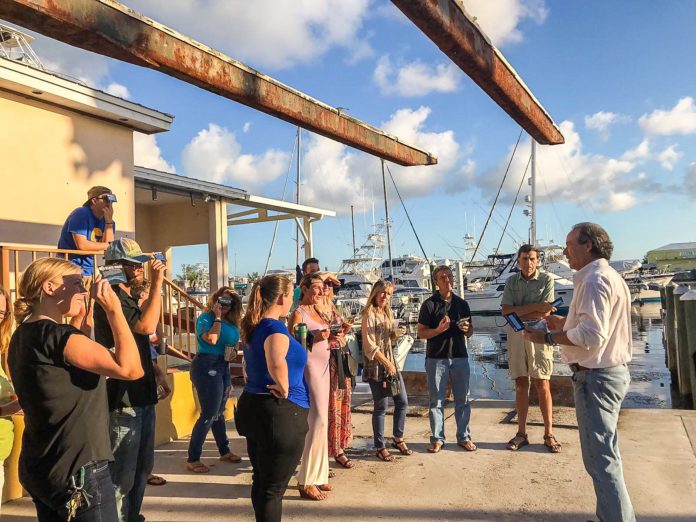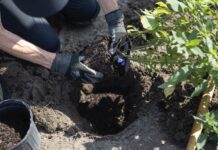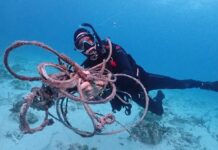
“Please follow me outside,” Charles Fulco said to his audience. Each person holds a solar eclipse viewer in front of his or her eyes to safely watch the sunset. As the crowd looks at the sun through protected eyes, Fulco urges, “now, there’s going to be quite a few solar eclipses in the next four to five years, so hang onto these!”
Fulco is a dark-sky ambassador and educator. He travels around the country spreading awareness about the dangers of artificial light. He serves as the International Dark Sky Association local chapter director, and recently, he spoke at the Coral Restoration Foundation’s monthly Sips & Science talk.
As the crowd funneled back inside, Fulco began: “How sad is it that one light can obliterate an entire night sky?” Fulco showed a night landscape totally blown out by one streetlight. “This is why we need full cutoff LEDs and full coverage fixtures – the light shouldn’t go beyond the horizon line,” said Fulco. Older light shades allowed light to shine upward into the sky, polluting the night, he said. In contrast, modern shades keep light shining downward and help eliminate glare from viewers’ eyes. “Isn’t that better?” Fulco prodded, smiling.
“Form follows function. In nature, if it’s wasted, it goes extinct,” he said. “We humans create useless things. What’s an upward light do? Shine up my inseam? There’s really no purpose or reason for that.” Instead, Fulco wishes that the function of buildings would determine their lighting. Most of our buildings are over-lit, he said, creating a night atmosphere that is anything but dark.
This excess of light has unintended consequences. Fulco explained how, like humans, trees also need sleep at night. Artificially lit trees become confused, and actually grow when they aren’t supposed to. Griffith Observatory in Los Angeles no longer can function as an observatory because the L.A. lights obliterate the view. Finally, in an ironic twist, so-called “safety lighting” in plazas and at banks actually end up hiding crime. The light is so blinding and poorly directed that criminals have been known to hide in the glare.
“The Florida Keys are a particularly susceptible ecosystem,” adds Fulco. “We have baby sea turtles in the Keys whose eyes have naturally evolved over millions of years to follow the moonlight reflecting over the sea after they hatch. Unfortunately, laments Fulco, “We’re leading them to Joey’s Clam Shack when they should be going towards the ocean.” Fulco has long advocated in the Keys for red, sodium lights that don’t affect baby turtles’ eyes in sea turtle nesting areas. Some stretches on Overseas Highway near Marathon already have these lights in place. Birds, fish, vegetation, and even humans can also be negatively affected by light pollution.
Fulco ends with a plea, asking his audience to get involved and make different choices when it comes to light pollution and their ecological footprint in general. “We don’t have to be perfect, but we’ve gotta start somewhere and do better,” he said.


























